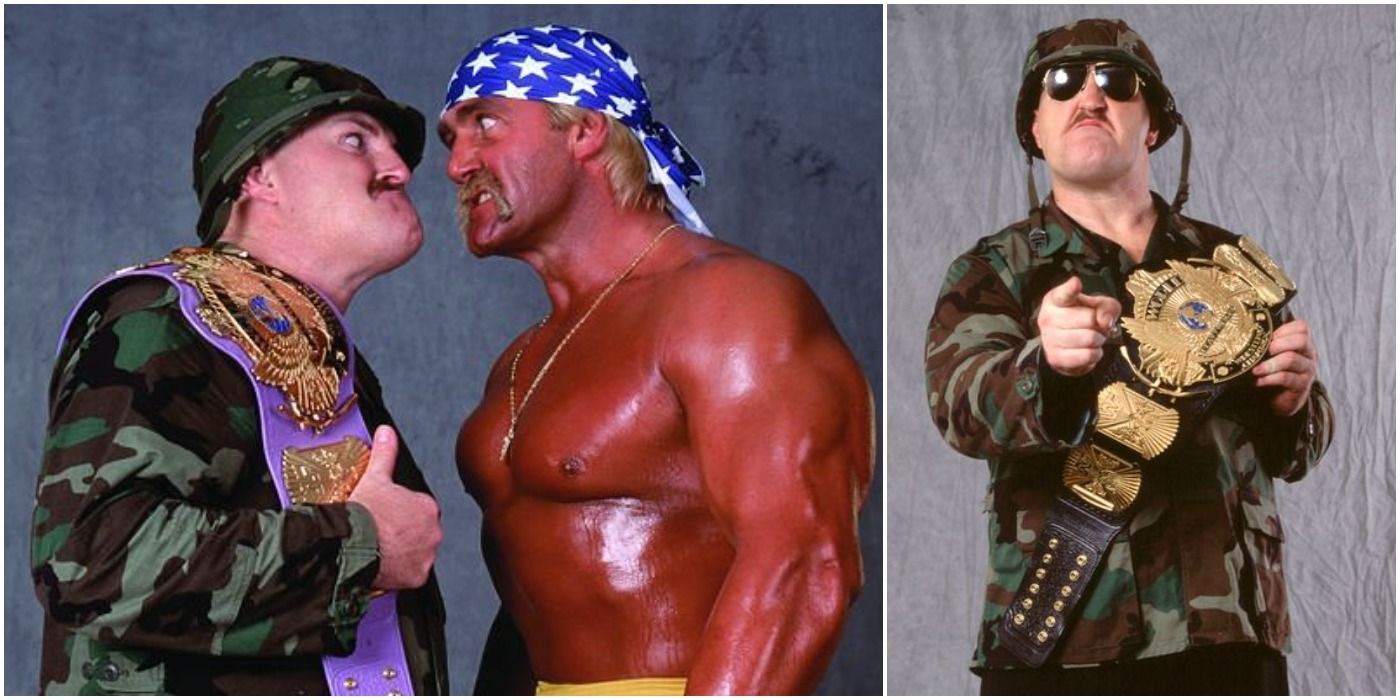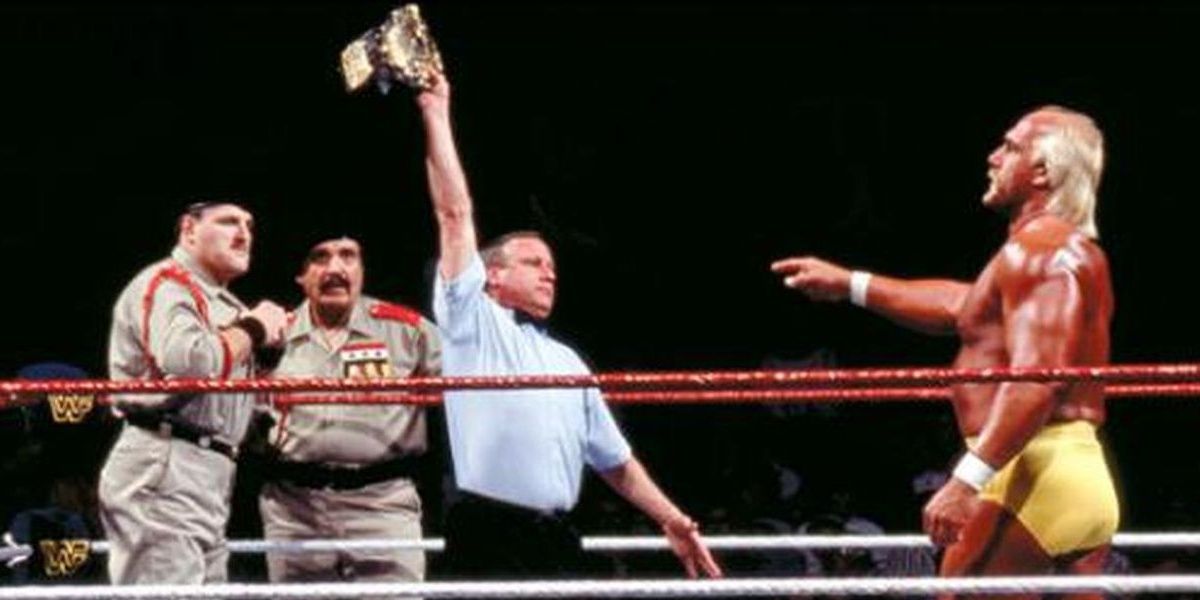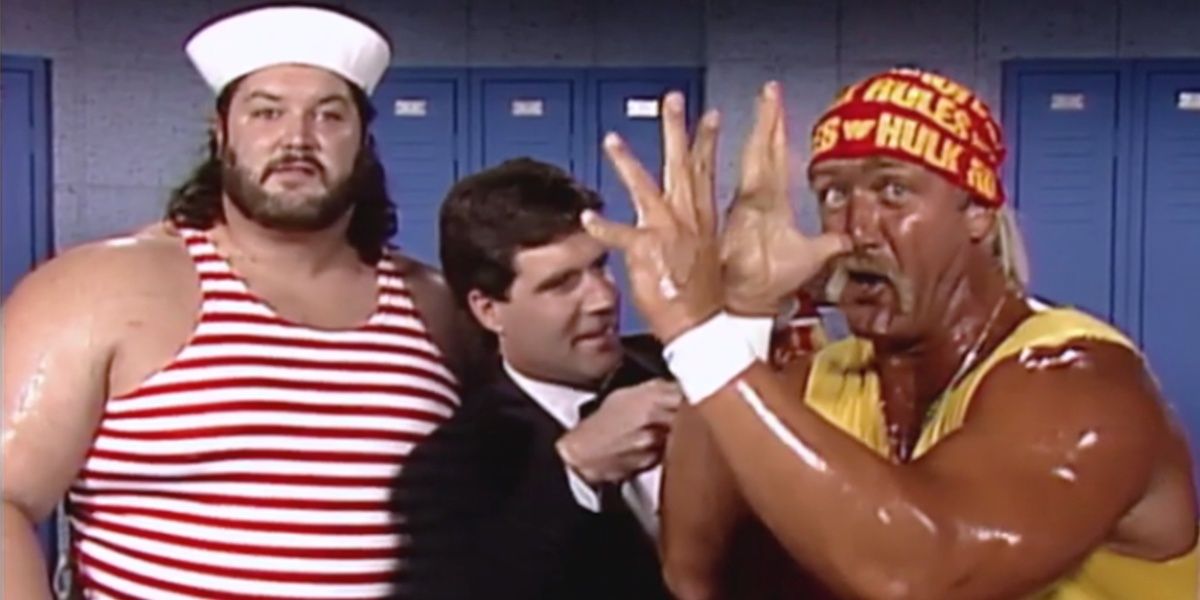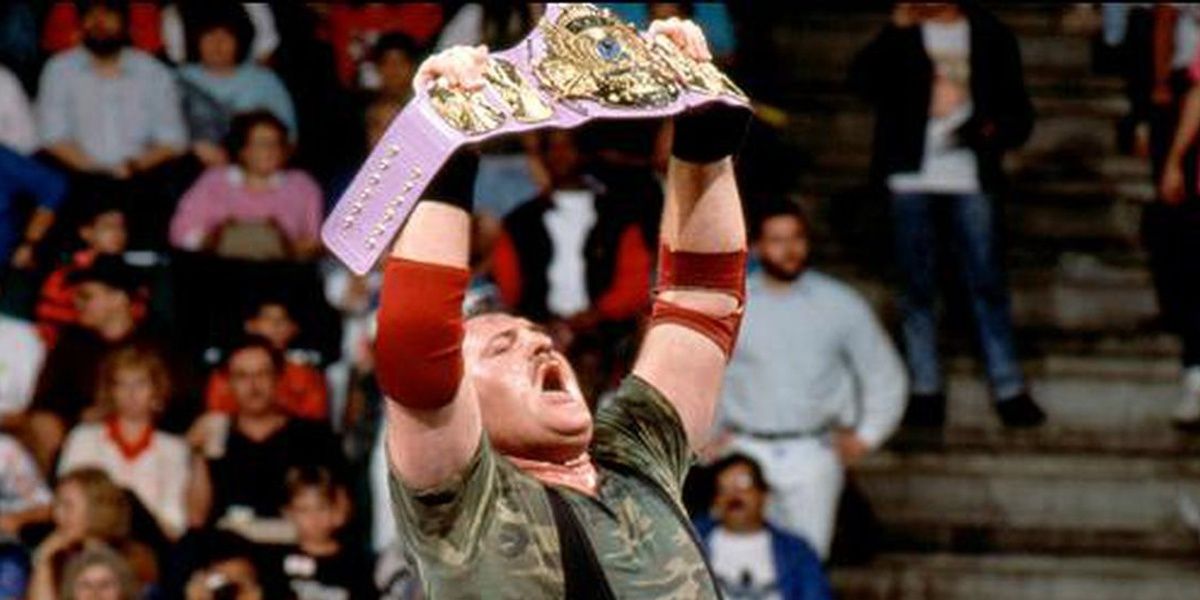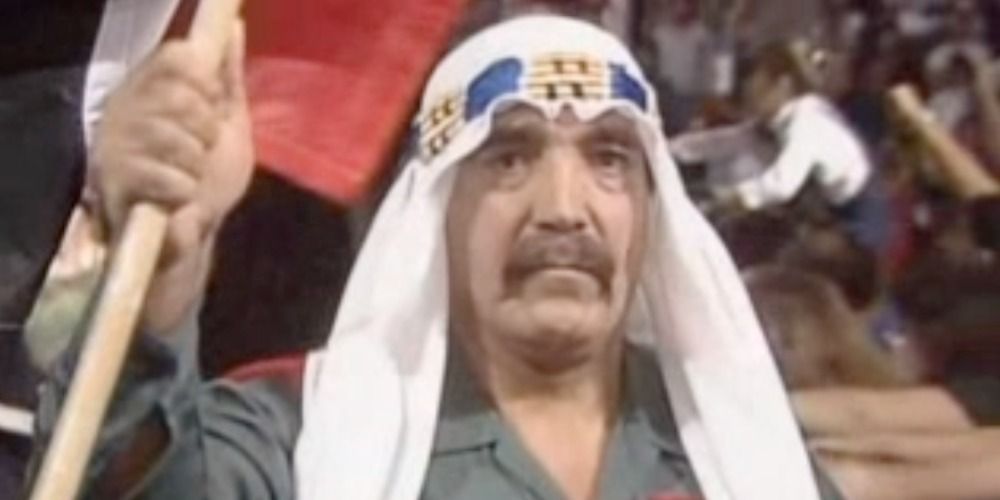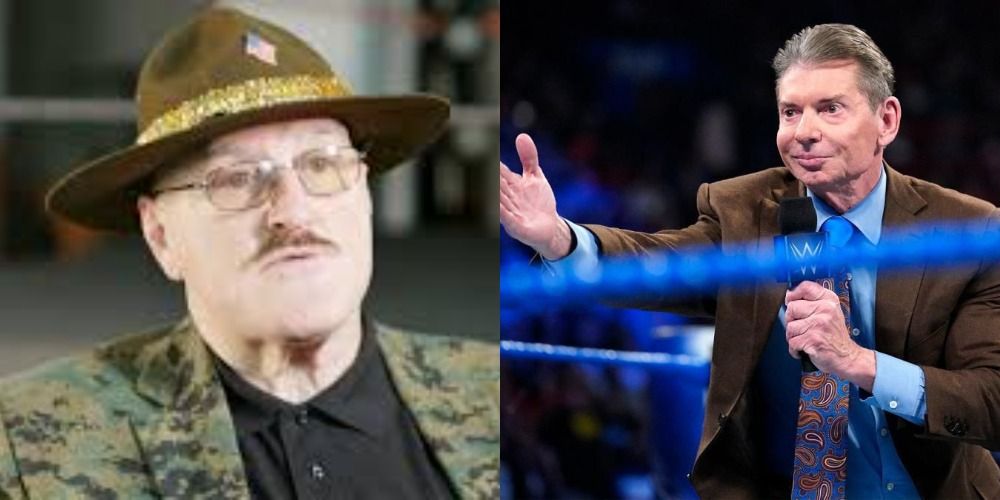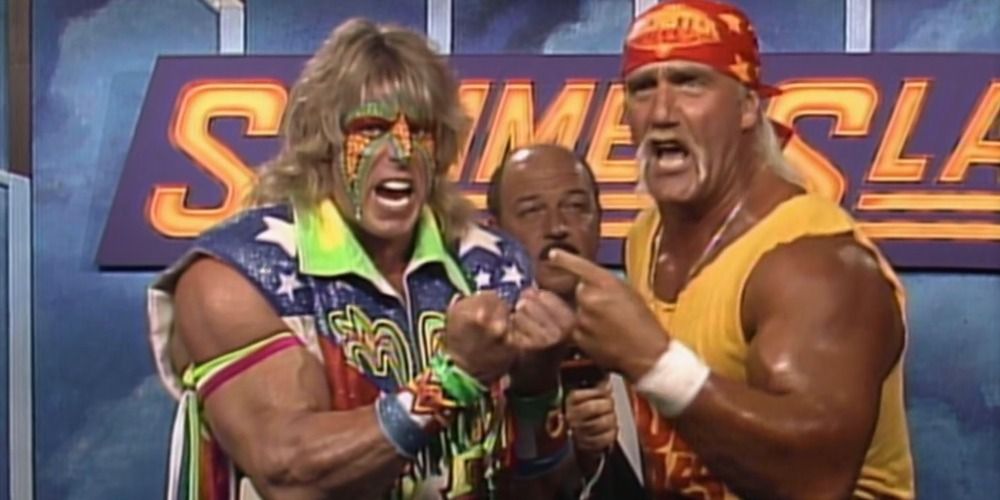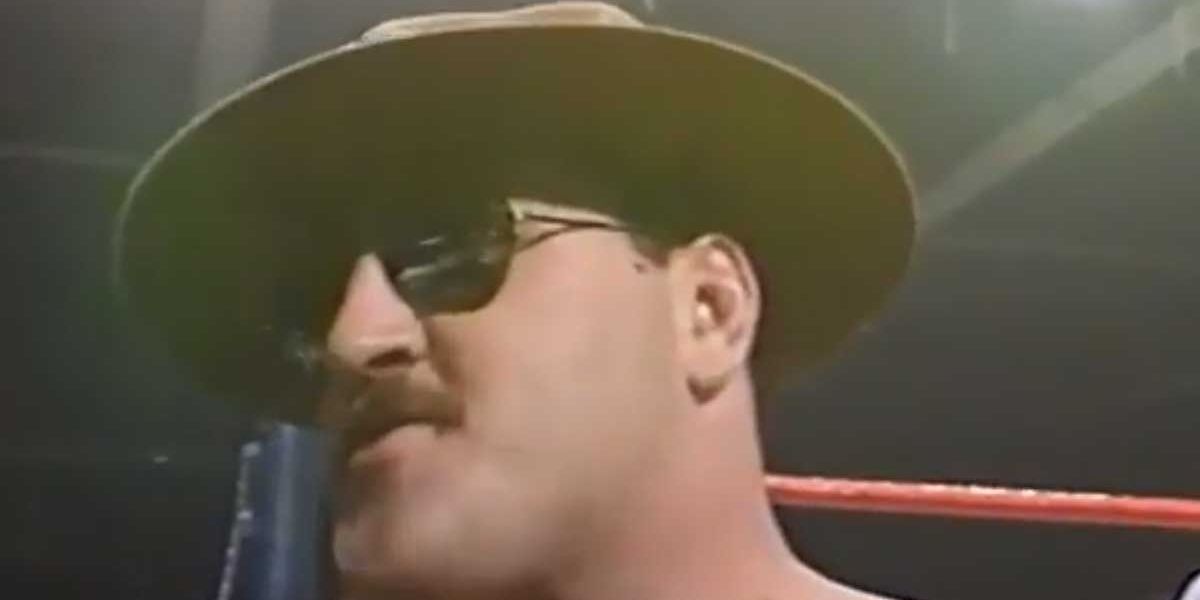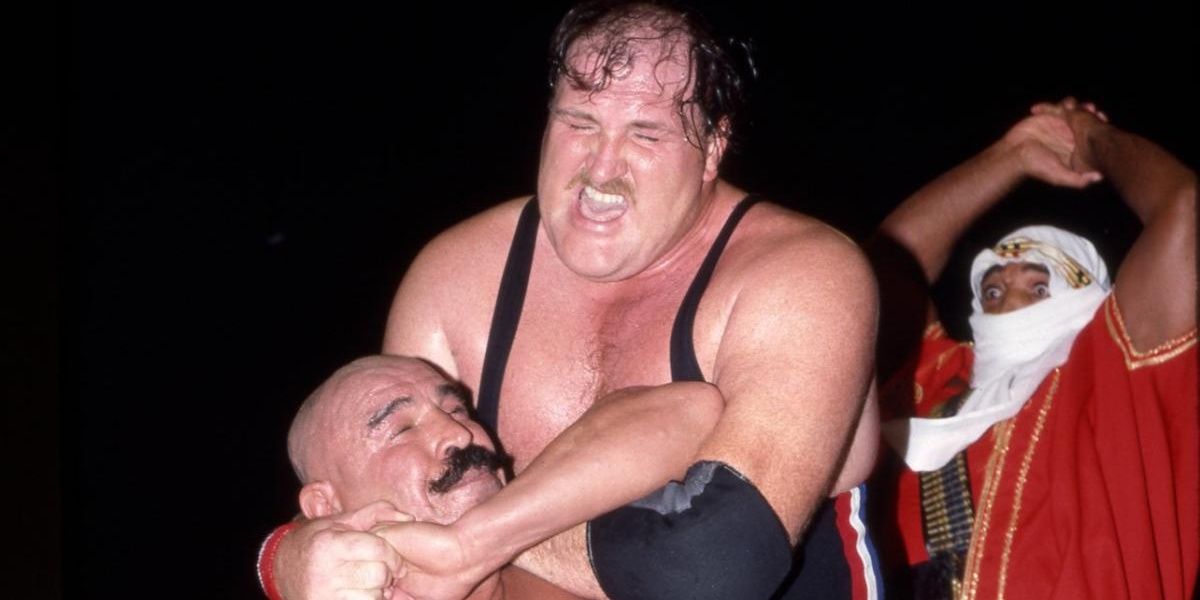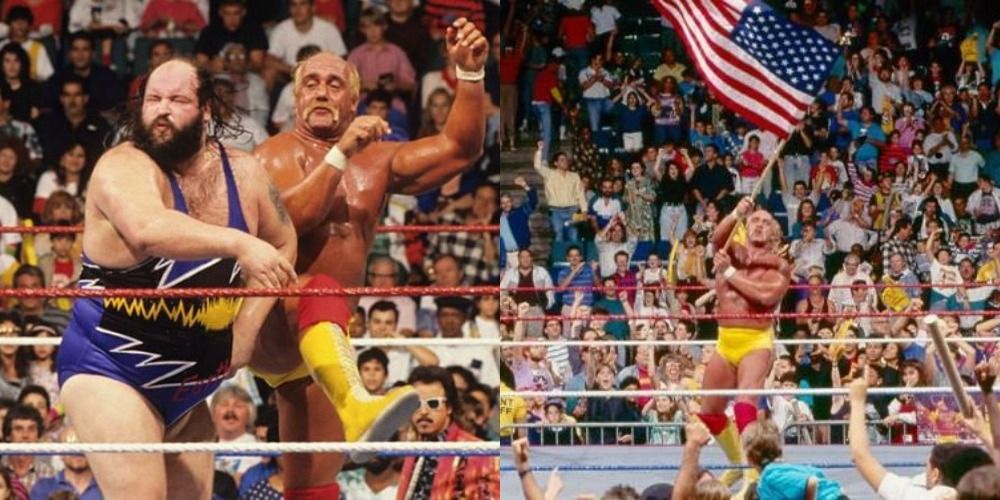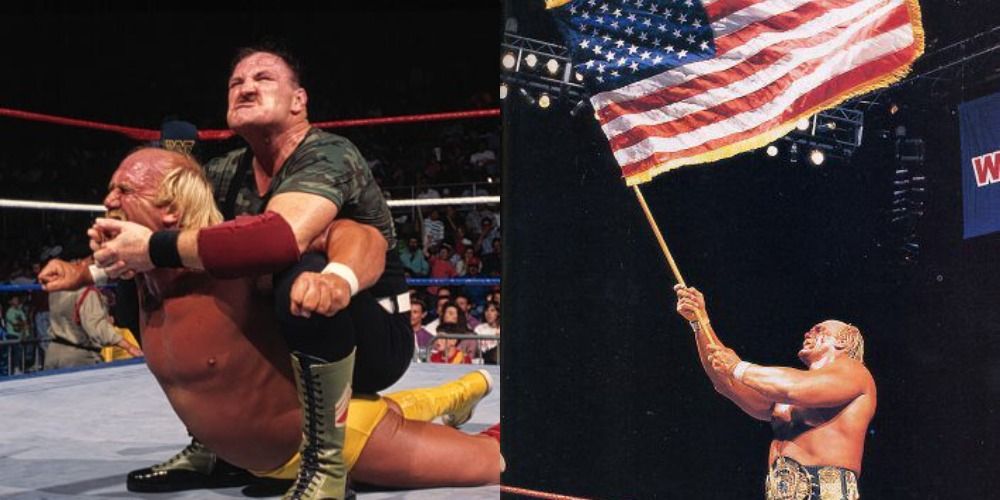One of WWE’s biggest rivalries of 1991 saw Hulk Hogan battle Sgt. Slaughter. Their feud revolved around both the WWE Championship and a sense of patriotism, as Slaughter had embraced Iraq in the heat of mounting tensions in The Middle East and the first Gulf War.
The Hogan-Slaughter rivalry headlined both WrestleMania and SummerSlam that year. It's a storyline that represented a changing of the guard, too, as it wouldn't be long before Hogan transitioned to increasingly part-time status, while fresher faces like The Undertaker and Bret Hart awaited their turns at the top of the card.
10 Hogan Handpicked Slaughter
In WWE’s The True Story of WrestleMania documentary, Sgt. Slaughter recounted the story that Hulk Hogan handpicked Slaughter as the man he wanted to feud with going into WrestleMania 7. Bruce Prichard corroborated the story years later on his podcast.
Hogan recognized Slaughter as a big enough name to sell the program WWE had in mind, and someone he’d be comfortable working with. Slaughter being selected as “the guy” here is noteworthy if only because he’d been gone from WWE for six years, only to return to an early WrestleMania main event program.
9 It Was Supposed To Be Tugboat
When Tugboat debuted and was immediately positioned as Hulk Hogan’s best friend, it suggested he may join the lineage of friends who turned into foes for The Hulkster. Sure enough, decades after the fact, Bruce Prichard confirmed on Something to Wrestle that the plan was for Tugboat to face Hogan at WrestleMania 7, likely as not in an Iraqi sympathizer gimmick analogous to Sgt. Slaughter’s.
Tugboat's career took a turn for the worse with the storyline change. He quite arguably peaked in WWE as Typhoon, half of The Natural Disaster tag team before his ill-fated run as The Shockmaster in WCW. Now, it’s tough to imagine him winning a world title or main eventing a WrestleMania.
8 Slaughter Was The First Man To Make His WrestleMania Debut Defending A World Championship
Not just anyone gets to be a world champion in WWE, and all the less so to carry the world title into WrestleMania. That’s especially so in the event's earlier years. In the first six years of 'Mania, only Hulk Hogan and Randy Savage garnered this honor.
Sgt. Slaughter became the first man to walk into his very first WrestleMania as the defending world champion (even Hogan had worked a tag match at the first WrestleMania before defending the title the next year). To be fair, Slaughter was no rookie, and it would only take one year for Ric Flair to follow in his footsteps.
7 General Adnan Claims Credit For The Storyline
General Adnan had a history of playing a heel foreigner long before WWE made him Sgt. Slaughter's sidekick. He may have been the ideal choice for this specific role, though, given he was legitimately born and raised in Iraq, and claimed in his book that he was a real-life childhood classmate of Saddam Hussein.
In an interview with the Wrestling with History podcast, Adnan claimed he actually pitched the storyline of himself and Slaughter representing Iraq to get heat with the American fanbase. Few have corroborated that he was the idea man, but there’s little question his presence did add heat and convince fans to boo Slaughter.
6 Slaughter Extended The Olive Branch To Vince McMahon
Sgt. Slaughter left WWE on disagreeable terms in the mid-1980s. In the McMahon documentary, Slaughter suggested that he tried to hold up Vince McMahon for more money and wound up shown the door, replaced by Corporal Kirschner. Other shoot interviews have suggested that the rift between Slaughter and WWE had more to do, specifically, with toy licensing and Slaughter’s relationship with the GI Joe brand.
Regardless of what caused the falling out, in WWE’s The True Story of WrestleMania documentary, Slaughter shared that he wrote McMahon a personal letter to congratulate him on how well WWE was doing and told him how much he enjoyed the product. It seems as though the letter was a pretty direct precursor to McMahon changing his mind and signing Slaughter for an eventual main event run with Hulk Hogan.
5 They Ended The Tradition Of Tag Team Matches Headlining SummerSlam
It was an unspoken tradition in the early years of SummerSlam main events that tag team matches headlined. In those days before throwing top stars together for tag matches became free TV fodder, getting to see four or five main eventers in the ring at the same time was cause for a dream match.
SummerSlam 1989 featured Hulk Hogan and Randy Savage battling Andre the Giant and Ted Dibiase, while SummerSlam 1990 cast a spotlight on Hogan and Brutus Beefcake against Savage and Zeus. In 1991, it was Hogan and The Ultimate Warrior against The Triangle of Terror, Sgt. Slaugther, General Adnan, and Colonel Mustafa. The match effectively blew off the Hogan-Slaughter feud and marked the last time a tag match would close SummerSlam for nearly two decades.
4 Sgt. Slaughter Got Threats In Real Life
In The True Story of WrestleMania documentary, Sgt. Slaughter and others discussed that the then-reigning WWE Champion received personal threats to himself and his family in the build to WrestleMania 7.
There’s a sense in which people getting carried away is a sign of success for the heat of a wrestling angle. However, it’s clear Slaughter was rattled. The real-life issue seemed to contribute to changes to WWE programming as well, as Slaughter suggested the threats contributed to a venue change for WrestleMania 7 and avoiding ramping up the heat on his character any further.
3 Slaughter Was Flanked By Two Of His Most Iconic Rivals
Though Sgt. Slaughter’s run as a top heel from 1990 to 1991 wasn’t the only time he played a bad guy, up to that point, he was most synonymous with the patriotic babyface role he played in WWE, AWA, and elsewhere. Accordingly, some of his most iconic rivals were anti-American heels The Iron Sheik (in WWE and AWA) and Sheik Adnan Al-Kaissey in the AWA.
It was certainly a departure from Sarge’s history when the rebranded Colonel Mustafa and General Adnan became his allies. The dastardly new partnerships signaled that Slaughter really had left behind his American hero roots, in favor of the Iraqi sympathizer persona.
2 Hogan Became The First Man To Win A Royal Rumble & Win The World Title At The Following WrestleMania
One of WWE’s most traditional stories of the last 30 years is to see the winner of the Royal Rumble get a world title shot at WrestleMania. This path paved the way for no lesser legends than Yokozuna, Shawn Michaels, Steve Austin, and Batista to all win their first world titles on The Grandest Stage of Them All.
Though Hogan had already been a world champion and had already won a Royal Rumble going into 1991, that year nonetheless saw him become the first man win a Rumble and proceed to challenge for the WWE Championship at ‘Mania (let alone win it). WWE hadn’t defined the stakes that a title shot was up for grabs by winning the Rumble, but the company arguably laid the foundation for that story here.
1 There’s Still Controversy As To Why Their Biggest Match Didn’t Happen In Front Of A Bigger Crowd
WrestleMania 7—headlined by Sgt. Slaughter defending the WWE Championship against Hulk Hogan—was originally scheduled to take place at the Los Angeles Memorial Coliseum, a venue with an estimated capacity of 100,000. However, WWE shifted gears, transitioning the event to the much smaller Los Angeles Memorial Sports Arena, with closer to 15,000 seats.
The True Story of WrestleMania documentary suggested that the change in venue was rooted in security concerns given Slaughter’s heat. Meanwhile, a popular theory pushed by Dave Meltzer indicates that ticket sales were slow and holding the event in the more modest arena offered a more suitable location. Interestingly, even after over 20 years, Bruce Prichard still held to the security explanation in discussing the matter on his podcast. It’s interesting that even all this time later, there still isn’t a consensus—at least publicly—as to why the change happened.

